Filipino Beverages: Basic Overview
Common Ingredients
Common Preparing Methods
Key Taste
Drinking Etiquette
Culinary Festivals
Influence and Fusion
Classifications of Filipino Beverages
-
Non-alcoholic beverages
These are beverages made with no alcohol content, ofte using local fruits in the Philippines.
Fruits include citric options (calamansi), coconut, etc.
It is very popular across the country due to the hot climate.
-
Alcoholic Beverages
Beer is the most popular option in the Philippines, made from fermented grains, malt barley, or hops.
Also, spirits made from palm sap are popular choices of many Filipinos.
Filipino beverages are drinks native or popular in the Philippines that tend to offer a refreshing or fruity touch. As a tropical country, the country’s population favors chilled drinks for a cooling effect.
Usually, many drinks utilize various fruits with the addition of condensed or evaporated milk to sweeten the mixture. To add to that, calamansi juice, honey, or sugar are common picks to adjust the flavor.
As for alcoholic options, beer, which is the most popular alcoholic drink, and palm sap wine, like tubâ and lambanog.
To get a better understanding of Filipino drinks, allow me to guide you through the elements that impact Filipino beverages along with their importance in the country’s culture.
Next, uncover the drinking culture and some ways to enjoy beverages just like a local. Also, let me guide you through some inquiries relating to Filipino drinks.
Scroll through and explore more about Filipino beverages using the filter system to aid you in the process of gaining more knowledge.
11 Popular Filipino Beverages
Get to know the drinks of the Philippines through the following list. Use the handy filter system to go through exciting categories like alphabetical order, ingredients, taste, preparation methods, drink types, courses, and global popularity.
Also, I suggest checking out some of the categories like the most popular, national, traditional, and even street beverages of the Philippines:
To fuel your journey, let’s uncover the key roles of Filipino drinks in the country’s culture.
Calamansi juice
- Non-Alcoholic
- Street Beverages
- Traditional
Calamansi juice is a popular Filipino beverage made from calamansi, a popular citrus fruit in the Philippines. This fruit is also known as calamondin, Philippine lemon, or Philippine lime, explaining why the beverage is also called Filipino lemonade.
Since calamansi juice is fragrant and very tangy, it is usually mixed with plenty of sugar or simple syrup and ice to balance the flavor profile. Sometimes, calamansi juice can be drunk hot without sugar as a homemade cure for a sore throat, boasting a refreshing flavor, and is suitable for all seasons, especially summer.
Buko juice
- Non-Alcoholic
- Street Beverages
- Traditional
Buko juice is coconut water derived from young green coconuts in the Philippines, with “buko” literally meaning “coconut” in Tagalog. It is different from niyog, which refers to mature coconut.
The word often refers to coconuts that have been on the tree for 6 – 7 months, while fully ripened ones are around 12 months old or more. The drink is relatively sweet, with the water being a little bit cloudy.
Filipinos usually offer buko juice at street stalls with chill ice and, occasionally, young coconut pulp. Bottled buko juice is also popular.
Kapeng Barako
- Non-Alcoholic
- Traditional
Kapeng barako is a Filipino coffee drink made from the beans of the same name. It is neither Robusta nor Arabica coffee but a type of Liberian coffee (Coffea liberica).
However, the beans have a low yield and are relatively difficult to cultivate due to the tree’s huge size. Nowadays, this coffee variety is mainly found in the provinces of Batangas and Cavite.
Kapeng barako possesses a strong profile along with a distinctive aroma usually compared to aniseed or licorice. Ideally, the coffee is brewed by boiling before serving as a dark and rich drink.
Sago’t Gulaman
- Non-Alcoholic
- Street Beverages
- Traditional
Sago’t gulaman is a Filipino beverage that is commonly sold at street stalls and roadside eateries. The drink is an ideal type of samalamig, known as sweet and cold drinks with ice in the Philippines.
The drink consists of sago pearls and gulaman (jelly), made by boiling the jelly and pearls before mixing with ice. Sago is the edible starch derived from the spongy core tissue of various tropical palm trees, while gulaman is seaweed-based jelly or agar.
Besides these two ingredients, sago’t gulaman also calls for a syrup made from sugar and extracts of pandan or vanilla. In some cases, people replace sago pearls with tapioca pearls.
Samalamig
- Non-Alcoholic
- Street Beverages
- Traditional
Samalamig is a family of sweet and chilled beverages in Filipino cuisine, often sold at street stalls and roadside eateries, especially in the summer.
The cold drink is a combination of ingredients like fruits and fruit juices (especially those derived from coconuts), jelly, sago pearls, tapioca pearls, condensed milk, and muscovado (unrefined cane sugar).
In Tagalog, the name samalamig came from a phrase meaning “at a cold place” or “for cold drinks”. Alternatively, locals also call the drink palamig, meaning “cooler” or “chiller”.
Lambanog
- Alcoholic
- Traditional
Lambanog is a traditional palm liquor in the Philippines, coming from the Luzon and Visayas Islands. Interestingly, this liquor is often called coconut vodka because of its milky white appearance.
When it comes to alcohol content, the spirit offers 40 to 45% abv (80 – 90 proof), while the distilled version is at 83% abv (166 proof). Usually made with tubâ, lambanog needs about 48 hours of aging.
For serving, people savor lambanog neatly with some raisins to elevate the flavor. Tubâ aside, the liquor even boasts tastes like pineapple, blueberry, mango, cinnamon, and bubblegum.
Salabat
- Alcoholic
- Traditional
Salabat is a traditional Filipino ginger tea created using raw ginger root infused in hot boiling water. Typically, people will peel and slice gingers to release more flavor.
In modern times, locals even make use of ginger powder to whip up salabat. As for the flavors, the tea is best enhanced using sugar, honey, and calamansi.
Around Christmas, salabat is often sold by street vendors in the morning, especially on Simbang Gabi (dawn mass). Aside from its use in celebratory events, salabat is also a reliable remedy for treating sore throats, colds, and coughs.
Tubâ
- Alcoholic
- Traditional
Tubâ is an alcoholic drink of the Philippines, made using palm tree sap. Introduced during the Spanish colonial period, tubâ is a common pick for locals during recreational events.
Furthermore, Filipino animist religious rituals often feature tubâ. With its light alcohol content of around 2 – 4%, the alcohol is a favorite for social drinking in the Philippines.
When further distilled, tubâ alcohol content will increase to create a stronger drink called lambanóg.
Filipino Beer
- Alcoholic
- National
Filipino beer is a term covering a wide range of beer products in the Philippines, often revolving around products made by two major breweries, Asia Brewery and San Miguel Pale Pilsen.
As a national drink of the Philippines, beer is the most consumed since it was introduced to the country by Spain, often coming in glass bottles or tin cans. Commonly, the beer is lager or ale, possessing a light and crisp profile that suits many taste buds.
Historically, San Miguel holds the distinction of being the oldest brewery in the Philippines, having commenced operations in 1890.
Mango Nectar
- Non-Alcoholic
- Street Beverages
Mango nectar is a refreshing drink in the Philippines mainly consists of the juices and pulp of the mango, a tropical fruit. When presented as a drink, it is usually sweetened with sugar or honey and can be consumed by itself or mixed with other ingredients.
In the Philippines, mango nectar is a common pick for adding to desserts or sweet dishes.
Guyabano Juice
- Non-Alcoholic
- Street Beverages
Guyabano juice is a popular beverage in the Philippines that consists of the fruit of the guyabano tree, also known as soursop. This tropical fruit is prized for its rich, creamy texture and unique flavor, blending notes of strawberry, pineapple, and citrus with a slightly sour undertone.
The juice is not only cherished for its refreshing taste but also for its health benefits, as it is rich in antioxidants and fiber. In the Philippines, guyabano juice is often consumed for its purported medicinal properties.
What Factors Influence Filipino Beverages?
As a country that has many island regions, the Philippines has many features that affect Filipino beverages:
Afterward, you should find out how these types of drinks are categorized to have a better overview of them.
What Is the Importance of Filipino Beverages In Culture?
In Filipino culture, drinking is a key part of their traditions and way of life. At celebrations, funerals, or just casual meet-ups, alcohol often plays a big role.
The special custom of “tagay” is about sharing a single glass among a group that represents Filipino values of togetherness, friendship, and welcoming others.
This shows how important drinks are in bringing people together and celebrating Filipino culture. Typically, these events have a long history in the Philippines, with alcohol being an essential part of it.
What Is the Role of Alcoholic Drinks in The Philippines’ History?
Before Spanish colonization, indigenous Filipinos had mastered brewing. The Spanish introduced new distillation methods and sugarcane, creating new Filipino spirits.
These spirits later on symbolized hope and resilience under colonial rule. They were a way for Filipinos to maintain their identity and resist foreign dominance.
Today, these traditional alcoholic beverages hold significant cultural importance. They are used in various rituals, ceremonies, and social gatherings, reflecting the rich Filipino heritage.
Lambanog, a coconut wine, is known for bringing good luck and blessings. It’s often used in weddings, symbolizing purity and prosperity.
Each alcoholic drink in the Philippines, in many regions of the country, comes with various ingredients and even alcoholic contents.
What Are the Alcoholic Levels of Drink in The Philippines?
The Philippines has a wide range of alcoholic options that come with different flavors. Therefore, drinks often range from light to mild and even hard in terms of alcoholic content:
Light and flavored drinks are perfect for those new to alcohol or who prefer a softer touch. These include refreshing options like flavored beers.
Mild alcoholic drinks balance flavor and strength. For instance, tubâ is a palm wine, mildly sweet and yeasty when fresh. The drink has more flavor than light drinks but has moderate alcohol content.
For those who like strong spirits, the Philippines has plenty, lambanog, a coconut sap vodka, is known for its high alcohol content and clear taste. Hard liquors represent the bold side of Filipino spirits, offering an intense experience.
In case you’re looking to immerse yourself in Filipino culture, it’s also important to know how to drink like a local before hitting the beverage scene in the Philippines.
How Do You Enjoy Filipino Beverages Like Locals?
Become a pro when you want to quench your thirst in the Philippines by learning about how to enjoy drinks like a local:
Explore more about Filipino beverages through flavorful picks that go well with the country’s delicious food.
What Filipino Drinks to Pair with Dishes from the Country?
To have a full experience of Filipino cuisine, you need to combine their dishes and drinks to create an attractive flavor:
Each drink offers a unique touch when accompanied with the right dishes coming from the Philippines, giving you the fullest experience of how local dine.
After knowing about Filipino beverages, you should share these fascinating facts with others and leave a comment sharing your thoughts about related topics.







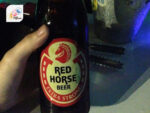
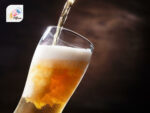
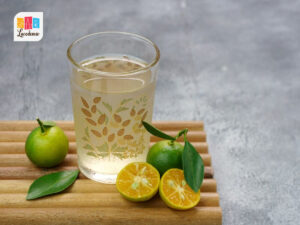
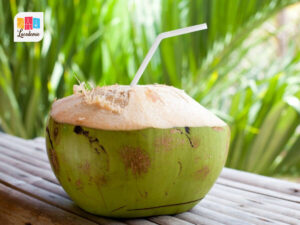


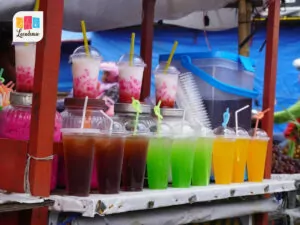




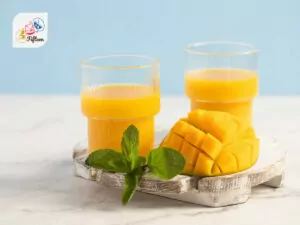


Jamie Scott
Editor in Chief, Senior Content Writer
Expertise
Home Cooking, Meal Planning, Recipe Development, Baking and Pastry, Food Editor, Cooking-video Maker, Western Food Evaluation Expert
Education
Le Cordon Bleu College of Culinary Arts
Local Community College, New York, NY
Jamie Scott is a skilled culinary expert and content creator specializing in Western cuisine. With over 15 years in the culinary field and formal training from Le Cordon Bleu, Paris, Jamie deeply understands how to blend nutrition with delicious flavors. His passion for cooking matches his commitment to making healthy eating accessible and enjoyable.
On Fifteen.net, Jamie brings a fresh perspective to classic dishes and beverages, offering readers insightful recipes, cooking tips, and a fresh view on meal planning that emphasizes taste, health, and simplicity.